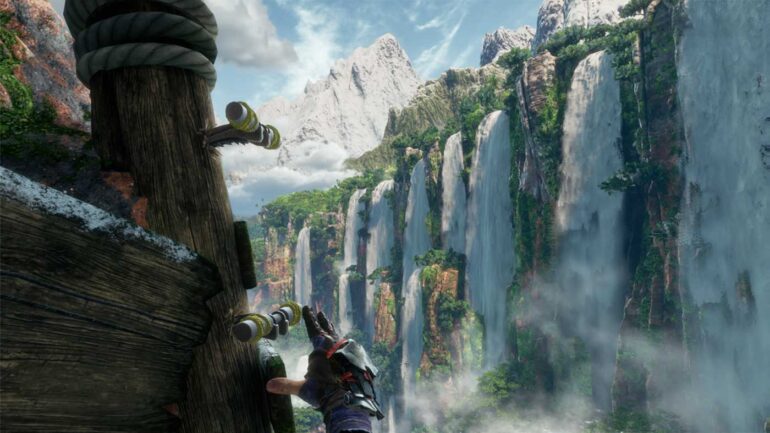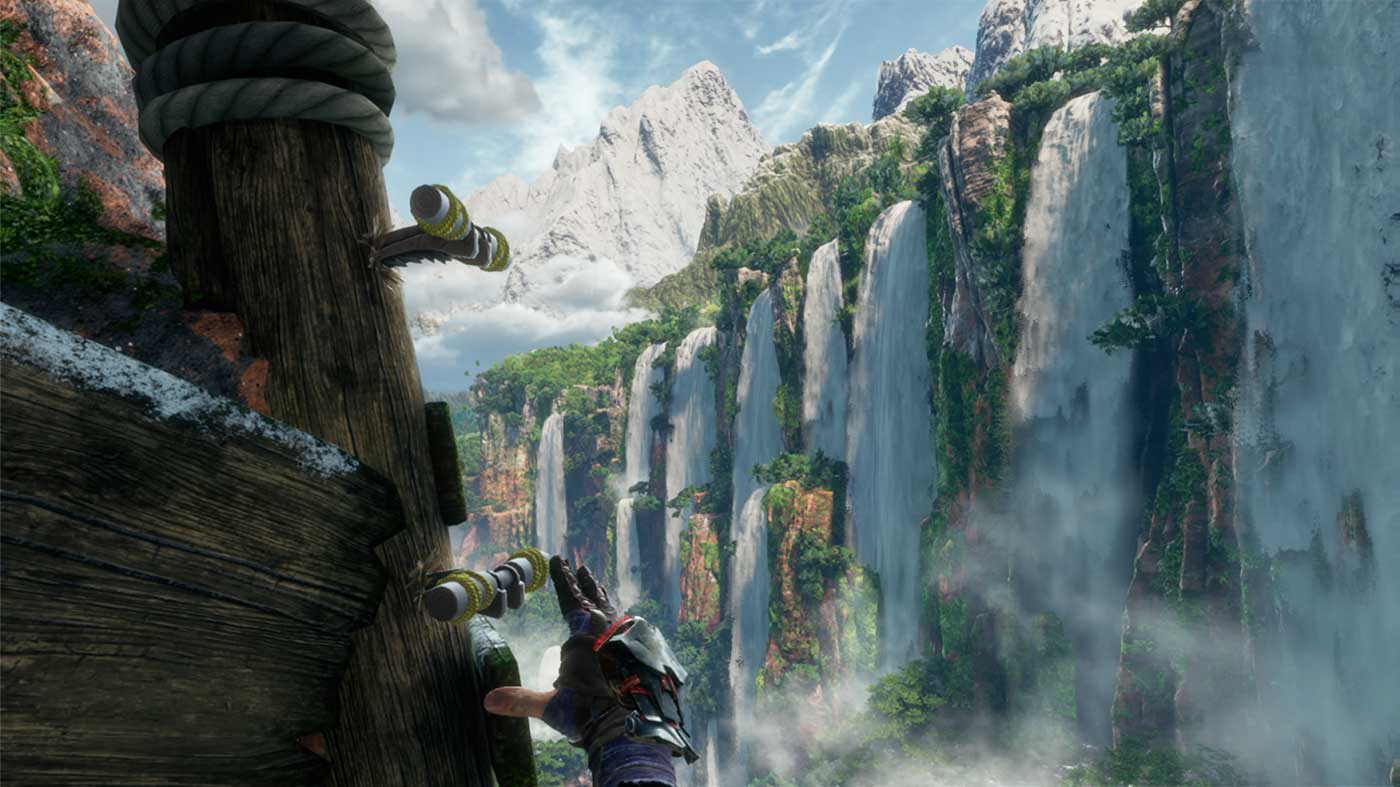While virtual reality has quickly become a space for some fantastically innovative and unique video game experiences, the number of titles that could comfortably be considered “AAA” VR blockbusters is quite small. With the arrival of the PlayStation VR2 though, it’s clear a killer app was needed to show potential punters that this is the next generation home VR platform, something to communicate what the combination of the PS5’s powerful hardware and the PS VR2’s cutting edge feature set could be capable of beyond novelty. Enter, Horizon Call of the Mountain.
As a side-story to the events of Horizons past, Call of the Mountain puts players in the figurative shoes of Ryas, an ex-Shadow Carja hoping to redeem himself in the eyes of the Carja and the Sundom as a whole. The game opens with the player being escorted to the care of Blameless Marad, who fans will recognise from the main series games, before things go awry and machines attack. As it turns out, the area of Brightdawn has been the subject of a series of machine ambushes and, in exchange for a pardon, the Carja want Ryas to go and investigate the cause of the attacks before the machines become a threat to the great city of Meridian.
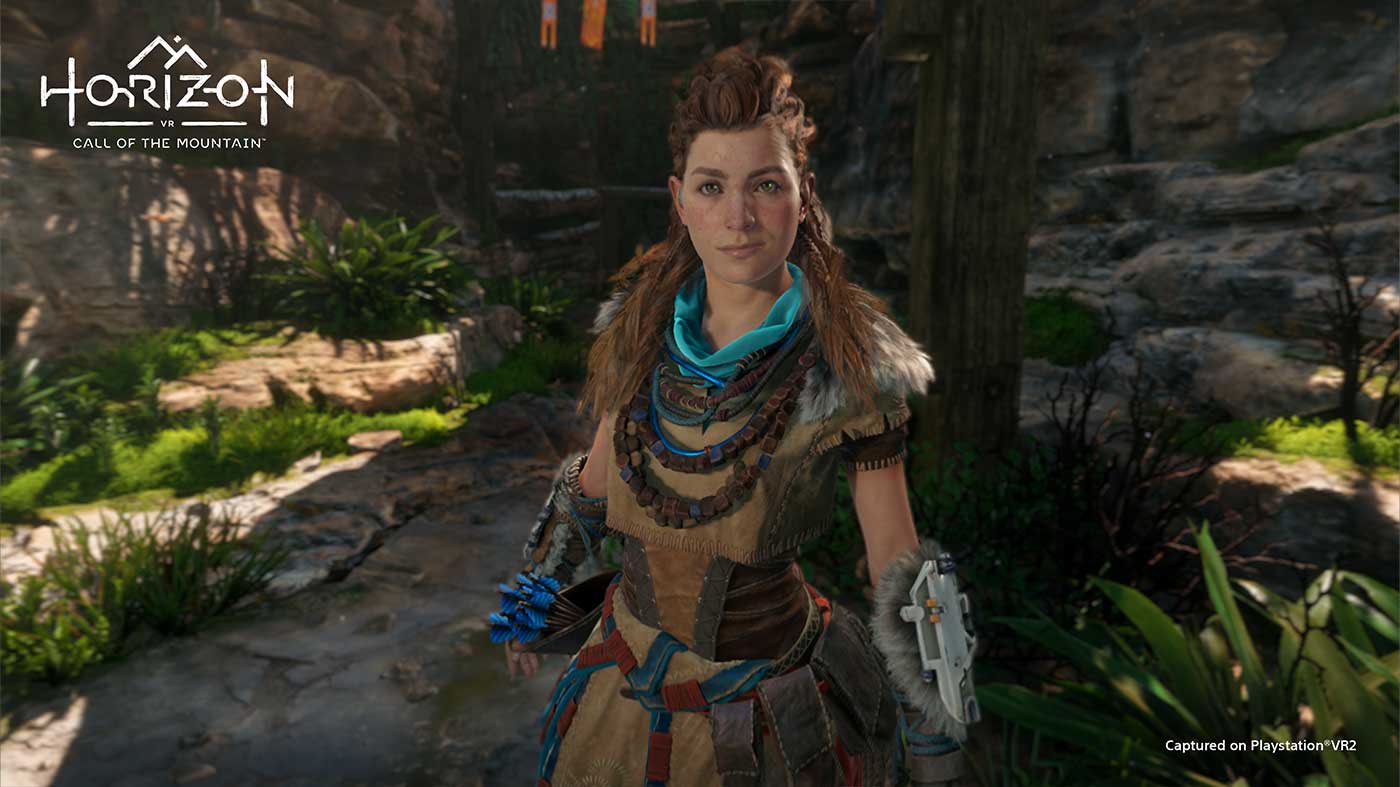
If you’ve yet to immerse yourself in the world of Horizon and that all sounded like a whole lot of nonsense, fret not. While it’s handy to have a general idea of what’s going on in this world, especially where familiar faces pop up on occasion, the narrative in Call of the Mountain is by and large just an excuse to shoot you around various locations within the Sundom from one exciting encounter to another. Ryas as a character is a little ho-hum, but as a moderately blank slate for players to embody in virtual reality he does the job.
More important than what’s happening in Horizon Call of the Mountain, is what you’re doing, which is a whole lot of traversal, climbing, puzzling, combat and tinkering in VR, and that’s where this game shines on a whole new level.
While the actual act of climbing is somewhat simple and pretty much exactly what you would expect from virtual alpining, it’s the climbs themselves in this game that are routinely exhilarating. Hanging off of dilapidated towers attached to cliffs hundreds of metres in the air and looking out across the enormous and richly detailed landscapes is easily one of the coolest gaming experiences I’ve had. You’ll genuinely feel like a badass as monkey-bar your way across makeshift rope bridges or hurl your Ropecaster across a ravine and swing to the other side like a 1997 Brendan Fraser.
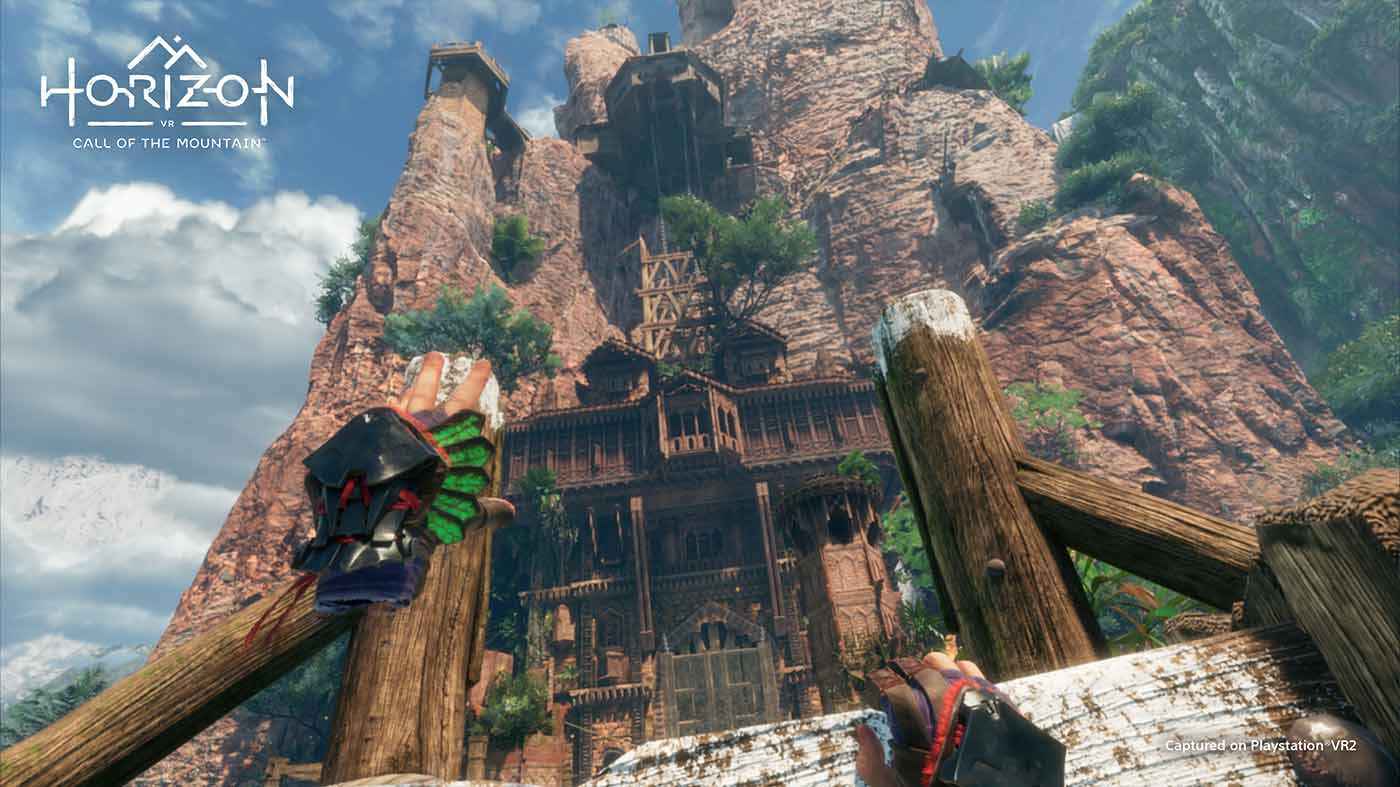
Most of the missions you’ll go on and areas you’ll explore in Call of the Mountain will also task you with figuring out light environmental puzzles that are typically very hands-on. All of the opportunities that the game gives you to interact with things in a nearly 1:1 fashion are a heap of fun and feel incredibly tactile and natural – even the optional gesture-based movement that has you walk by gingerly swinging your arms works well as a stand-in for actual ambulating and doesn’t feel nearly as goofy as it probably looks from the outside. One of my favourite touches is the way the game has you physically craft the new weapons and gadgets you find blueprints for along the journey, putting the different components into place and binding them with rope.
As great as the climbing and puzzles are in Call of the Mountain, arguably the weaker link is its occasional set combat encounters against recognisable machines from the games. Aside from a handful of semi-stealth based Watcher sections, most of these take place in contained spaces with movement restricted to strafing left and right while you fire various arrows and bombs at your foes. Firesprite has done a very respectable job of translating the fun of strategically shooting off each machine’s crucial components and utilising elemental damage to exploit their weaknesses, making the core part of the combat experience a thrill, but the limited movement and awkward and unreliable dodging controls can lead to frustration. The fights are still exciting, especially against the most formidable of the machines, but they’re less successful overall than the game’s other portions.
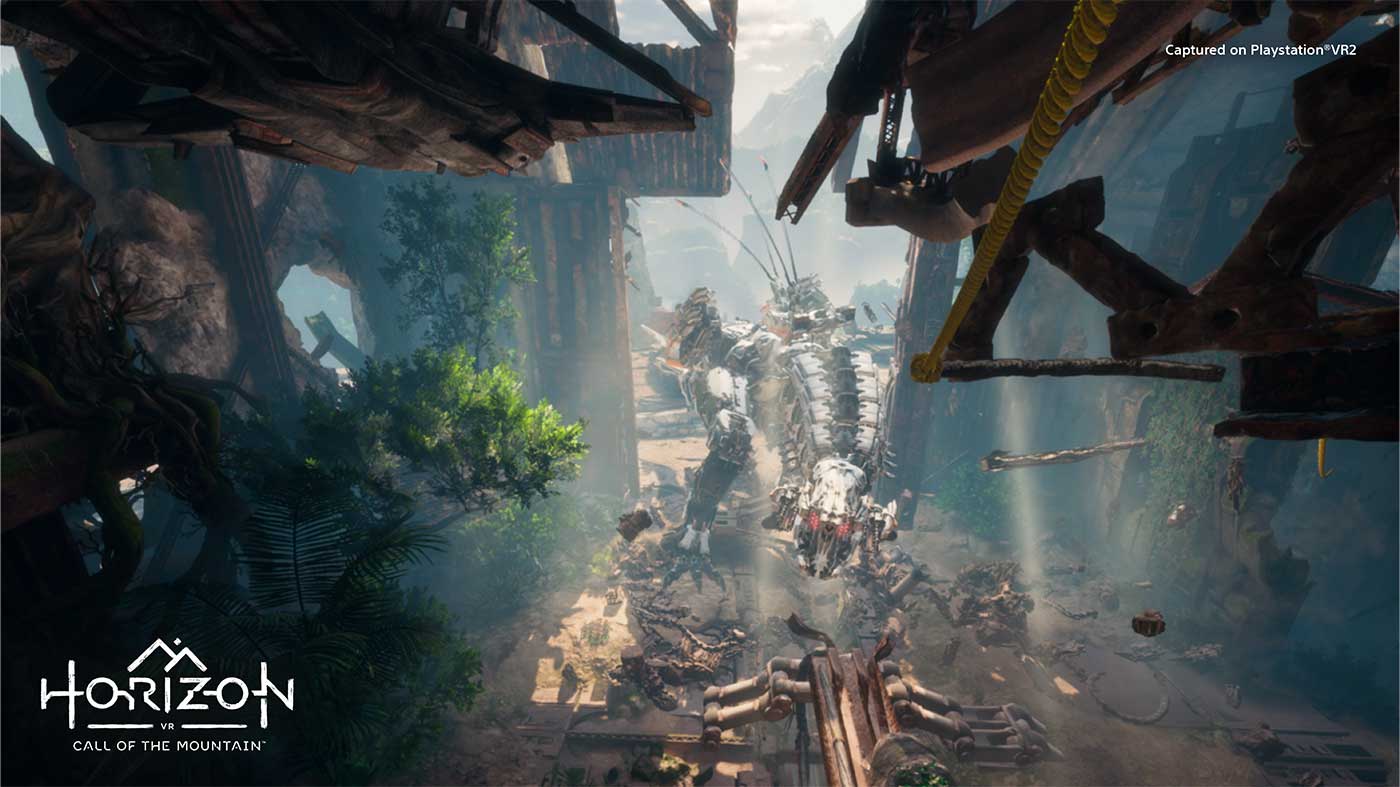
There’s no denying the production values here are immense, with the game looking every bit as accomplished as a majority of “flat” AAA games. Sure, it’s not quite the technical powerhouse that something like Horizon Forbidden West is on PS5, but for the VR space it’s downright astonishing. Sweeping vistas, lush and detailed environments, gorgeous lighting and precise physics interactions all come together to mind-blowing effect here. Though I’m yet to have tackled any super-high end PC VR gaming on astronomically expensive equipment, this is easily the most visually impressive virtual reality title I’ve had the pleasure of experiencing. From an audio standpoint it’s also very impressive with a fantastic soundscape and score, all heightened by the Tempest 3D Audio Tech.
As far as other unique PS VR2 features go, the game also does a great job of showcasing things like haptic feedback, adaptive triggers and eye tracking. Haptics in the controller and the headset convey both immense feedback like the crashing of a Thunderjaw’s tail into a nearby turret or the force of a Stormbird’s beating wings, as well as small subtleties like the difference in the way a rope or a heavy stone feel in the hand. Eye tracking is used to great effect in ways that add to the immersion and augment gameplay nicely. NPCs will actively catch your gaze, which really took me aback when I first realised it was happening, and you can navigate menus just by looking at the options you want. There’s even an option to add extra aim assist to enemies and objects you’re focusing directly on, which I think is super neat.
READ OUR FULL REVIEW OF THE PLAYSTATION VR2 HERE
As someone who’s sunk easily over 100 combined hours in the two mainline Horizon games, probably the biggest draw here for me has been the prospect of seeing the many machines up close and personal, and Call of the Mountain definitely doesn’t disappoint. The sheer scale and detail of these things is a sight to behold and really puts into (literal) perspective just how fearsome and powerful the likes of Thunderjaws, Stormbirds and Fireclaws actually are in this world. A special extra mode available once you’ve gone through the onboarding portion of the campaign, called Machine Safari, that takes you on a five-minute boat tour where you can see the game’s svelte selection of machines going about their business without fear of being destroyed. If you’re looking for a quick and easy way to introduce someone new to VR via the PS VR2 it’s probably the best little experience I’ve come across yet.
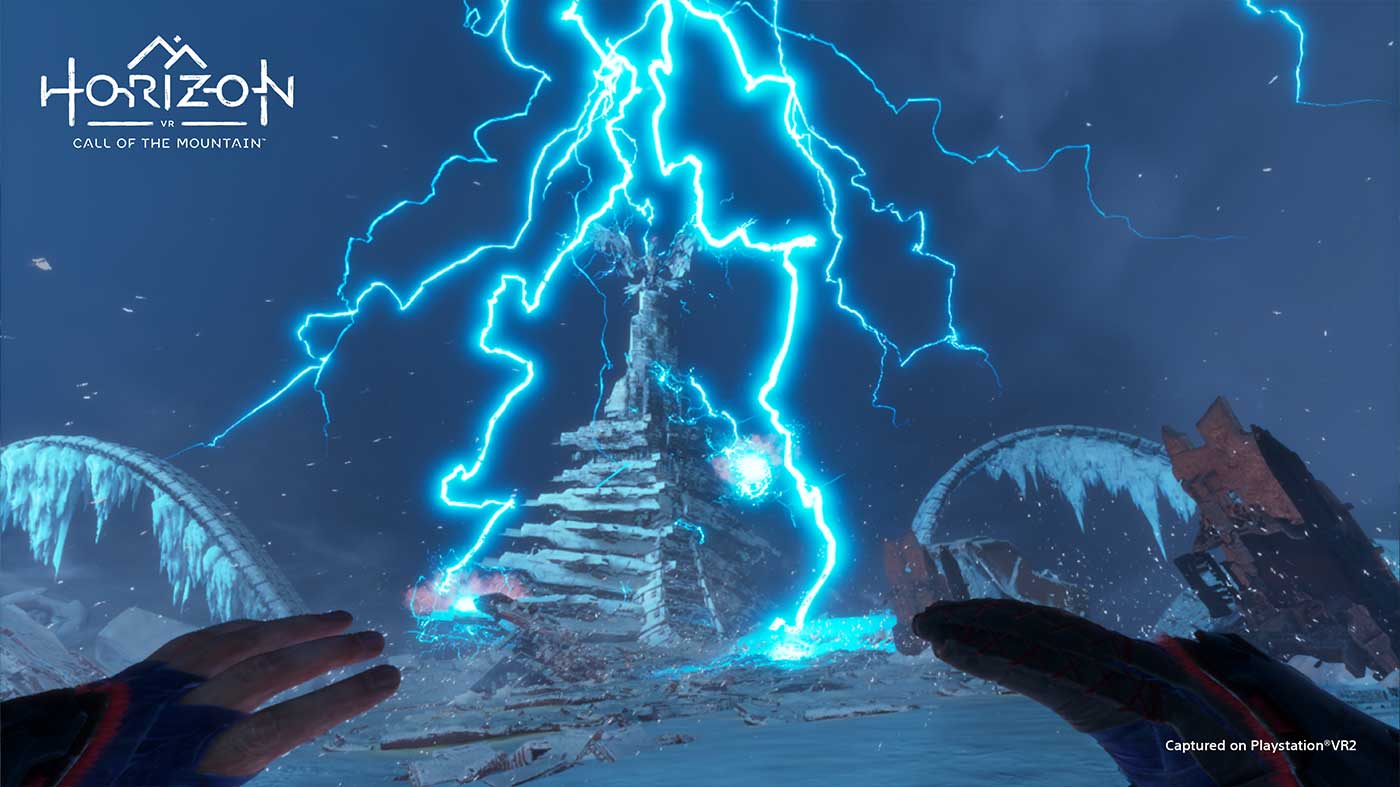
It’s also packed with a number of wonderful little touches, like the way NPC characters dynamically react to you getting too close for comfort, even when they’re already speaking and animating in dialogue scenes, or the fact that you can accidentally burn yourself with a torch if you’re not careful about where you wave it. The team at Firesprite wasn’t afraid to let players have a little fun along their journey, with plenty of musical instruments, paintbrushes, breakable pottery and other distractions dotted along the way.
What’s crucial with Call of the Mountain is that, while all of the above is very fun and exciting, it could have easily come off as nothing more than a very expensive and well-polished tech demo. It manages to feel like more than that though, not only serving up a well-paced, 8-10 hour campaign full of engaging mechanics and progression but also giving players plenty of reason to come back with things like collectibles, extra challenges, the excellent Machine Safari mode and simply by virtue of its world being a fantastic place to immerse yourself in.
The PlayStation VR2 and Horizon Call of the Mountain release on February 22nd, 2023.
PLAYSTATION VR2 PRE-ORDER LINKS:
- PlayStation VR2 Standard Kit – $878 with free shipping
- PlayStation VR2 Horizon Call of the Mountain Bundle – $958 with free shipping
- PlayStation VR2 Charging Station – $79 with free shipping


